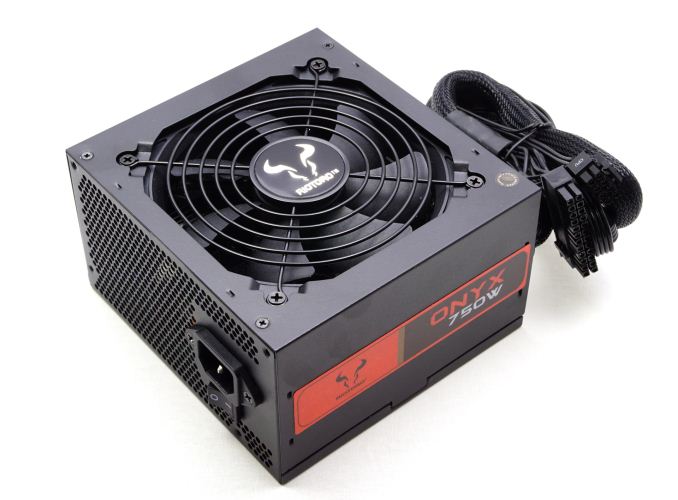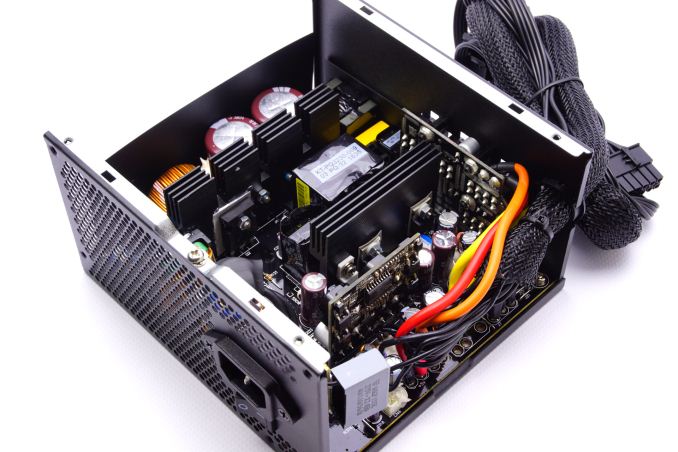The Riotoro Onyx Power Supply Review: 650W & 750W Tested
by E. Fylladitakis on March 23, 2017 10:00 AM ESTConclusion
In this review we examined two of Riotoro’s first power supply units, the Onyx 650W and the Onyx 750W. The company’s approach is simple, attempting to deliver quality but also a reasonably priced unit for home PCs and casual gaming systems. It was never their goal to market PSUs with astounding performance figures or fancy designs - Riotoro wanted PSUs that would appeal to the bulk of the market, which largely consists of regular users and casual gamers.
Perhaps the strongest selling point of the Riotoro Onyx PSUs is their build quality. Great Wall may not be a well-known OEM in the North American and European markets, but they are an old and experienced manufacturer. Riotoro made good components choices as well, especially with the all-Japanese capacitors, which is a very rare sight into products that are designed to mainly compete in terms of pricing. Our only concern lies with the sleeve bearing Yate-Loon fan, which is the weakest link of the whole unit - anecdotally these fan models tend to fail after some years. However the fan should easily outlive the unit’s three-year warranty and beyond, but we would still rather find better quality fans into these units.
The overall performance of the Onyx PSUs is very good. Both units displayed high-efficiency readings at light and heavy loads, as well as proper filtering and regulation on all of their voltage lines. They also maintain low noise levels when they are operating in good environmental conditions or heavily loaded for prolonged periods of time. However, due to the high internal temperatures that occur with the units heavily loaded when operating under harsh environmental conditions, we would not recommend using the Onyx for systems that maintain heavy loads for prolonged periods of time with perhaps limited cooling (e.g. cryptocurrency miners), as the stress will certainly have a serious impact on the longevity of the units.
The MSRP prices of the Onyx 650W and Onyx 750W PSUs are $80 and $90 respectively, but we already see both units selling for $10 less each depending on the retailer. The company currently also has a running campaign that gives customers an extra 10% off and free shipping for units preordered via their website. These are reasonable prices considering the quality and performance of the units and so we believe that Riotoro has fully attained their goal to design a competitive PSU for today’s PC market. After the company’s campaign expires, the success of the Onyx series will depend on its availability and Riotoro’s ability to survive the price war that their competitors will undoubtedly silently declare.
Suggested Reading
- The SilverStone SX700-LPT SFX 700W PSU Review
- The SilverStone ST60F-TI Strider Titanium 600W PSU Review
- The Raidmax RX-700AT 700W 80Plus Titanium Power Supply Review
- Best PC Power Supplies: Holiday 2016












32 Comments
View All Comments
DanNeely - Thursday, March 23, 2017 - link
I thought bitcoin was a bit earlier, must've just been distributed computing projects that did them in. I jumped directly from my GT6800 to GTX260; at which point there were already a decent number of compute projects available to choose from (I'd been running CPU apps via BOINC for several years at that point).kn00tcn - Wednesday, March 29, 2017 - link
xfx may have been the second 'lifetime' or 'double lifetime' brand, though i'm not sure if that was before the amd switch in 2008/2009eriri-el - Friday, March 24, 2017 - link
Don't forget luck playing its usual tricks on us humans. Don't point all ur fingers at the manufaturer/brand alone. My Corsair HX520W is now entering its 10th year of service on my main and only PC. I have been changing and upgrading parts here and there, but I have never seen the need for more power, so I never change it just to see how far it would take me. Maybe one day I'll get something new for more efficiency, but right now I'm just happy it still runs.Sivar - Saturday, March 25, 2017 - link
SeaSonic probably made your Corsair, too.nagi603 - Sunday, March 26, 2017 - link
The first gen Seasonic X series were great, I still have an X400. The latter though... About 1.5 years ago I had a X420 that blew first time I turned it on, and a replacement X400 that refused to turn on about a year later, in a file server that was on maybe 1% of the time. I can only hope the X650 I got instead will last longer.kn00tcn - Wednesday, March 29, 2017 - link
bfg was a dominant nvidia partner like evga is now, to call it some random new company is a complete insult & total ignoranceto not know that many corsair psus are/were built by seasonic is also ignorance
DanNeely - Thursday, March 23, 2017 - link
"The 750W version has two extra PCI Express connectors, plus extra SATA and Molex connectors. Technically, the power rating difference does not really justify such a vast difference on the number of connectors, suggesting that Riotoro simply wanted to differentiate the target group of their two models."The Molex/Sata connectors are almost certainly about differentiation. At potentially 150W per connector 4 6+2 GPU connectors are pushing the limit of what a 650W unit can provide so only putting 2 of them on the smaller one isn't unreasonable. OTOH if they wanted they could've added a single 8 pin GPU connector or 2x 6 pins within the output headroom.
Shadowmaster625 - Thursday, March 23, 2017 - link
Is it that difficult to make a power supply that doesnt give away 10 watts when your machine is idling at 42W?bill.rookard - Thursday, March 23, 2017 - link
It's the span of the wattage that makes it difficult. Not only does the circuitry have to handle generating 50w, it also has to put out 500+ with the exact same design. I'm sure they could design a dual-mode power supply, which has two stages (similar to Arm's BIG.little core designs), but then that's extra components and extra cost, and ultimately for what?Saving 8w of power?
8w of power @ 24/7 is hardly one kw/hr - so it would save you 10c per week, but cost you an extra 50$ for the PSU. That means you'd recoup the savings in 10 years. :)
DanNeely - Thursday, March 23, 2017 - link
The short version is yes. The hardest part of the latest 80+ standard (the first to set a 10% target in addition to the 20-100% ones) is getting the losses from all the fixed power components down, not getting an extra percent or two of efficiency at full load.Broadly speaking your power losses are made up of the sum of a fixed value that's constant when the PSU is turned on and one that grows linearly with power used. Turning the fan on/up and extra losses from hotter parts are why it begins to dip down again at max load.